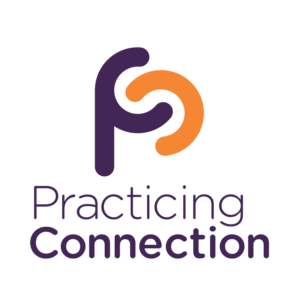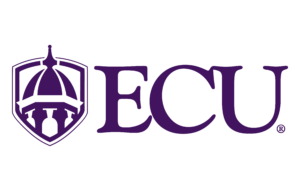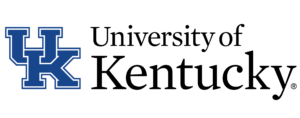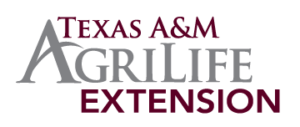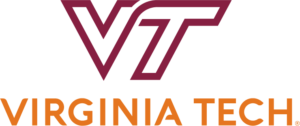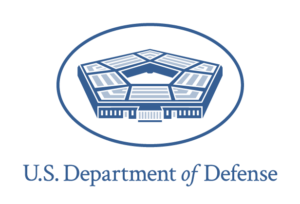
- This event has passed.
Collaboration
August 1, 2020 @ 1:50 pm CDT
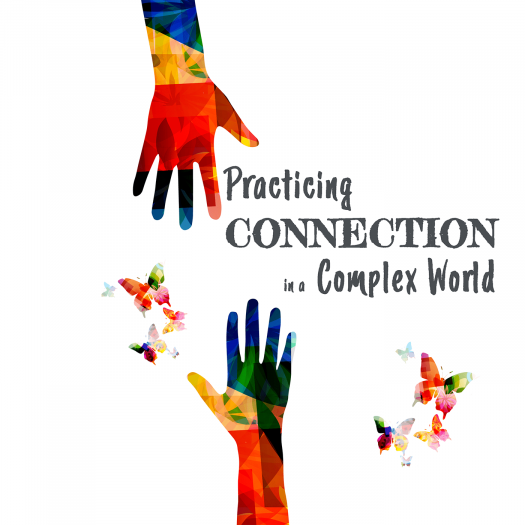
Listen now:
About this episode:
(Season 1, Episode 2)
In this episode, hosts Jessica Beckendorf and Bob Bertsch explore different perspectives on collaboration. Is there a mindset that leads to collaboration? How can we encourage collaborations that create something new? What makes for a good collaboration? Jessica and Bob address those questions and more through:
- Dr. Robyn Keast’s presentation, “Why Blue Box Thinking is Not Good for Collaboration”
- The story of BRAVO Youth Orchestra’s collective composition, “Break the Cage”
- Shared collaboration experiences from our OneOp colleagues Robin Allen and Jason Jowers
- A commitment to practice something that they learned from this episode
Special thanks to Nathan Grimm, who composed all of the music for the podcast; Kalin Goble, who recorded the episode introduction; Jen Chilek, for her help with OneOp promo and our podcast website; and Hannah Hyde and Terry Meisenbach for all their help with marketing.
You can stay in touch with us and connect with our Practicing Connection community by subscribing to our email list. Subscribe now.
Extras
- Watch a video of Dr. Robyn Keast’s presentation, “Why Blue Box Thinking is Not Good for Collaboration.”
- Learn more about Networks and Collaborations from Dr. Keast’s website.
- Watch a video of highlights from the collective composition of the BRAVO Youth Orchestra’s “Break the Cage.”
Transcript
Segment 1: Blue Box Thinking
Robyn Keast: If you don’t invest time and effort in building relationships, and I mean really authentic and genuine relationships. You’re going to to always have this problem that you will still be a blue box thinker.
Kalin Goble: Welcome to Practicing Connection in a Complex World, a podcast exploring the personal stories and collective practices that empower us to work together to help each other, our families, and our communities improve our resilience and readiness in a rapidly changing world. To start our conversation, here are.Jessica Beckendorf and Bob Bertsch.
Jessica: The voice you heard at the top of the episode was Dr. Robyn Keast talking about collaboration and the importance of relationships, which is pretty much what this podcast is all about. Right, Bob?
Bob: Definitely. That’s where we’re focused, you know, practicing connection in a complex World. Definitely the connection part connects…relates to that relationship that Dr. Keast was talking about, but it also, hopefully, I think for us, leads to something more than just those relationships, and…and that something more can be collaboration, shared work.
Jessica: I’m really excited about this episode because we found some really great stuff to kind of talk about and to explore together.
Bob: And we have great examples of collaboration coming up for you starting with a little bit more from Dr. Keast. We reached out to her, and she was really super kind in allowing us to use the audio from a presentation that she did in 2016 called “Why Blue Box Thinking Is Not Good For Collaboration.” Dr. Keast is a professor in the School of Business and Tourism at Southern Cross University in Australia, and as she talks you’re going to hear her talk about some diagrams and describe them. And just keep in mind, use your imagination a little bit, the boxes that she’s talking about represent people’s roles in these kinds of working relationships, and the blue box that she’s talking about is always at the top of that diagram.
Robyn Keast: Collaboration is this wonderful, wonderful thing, right, but it’s not the only tool in your toolbox. There’s lots of other ways that you can actually work together, and they range from, I call them, the five C’s, the compendium of C’s, from competition at one end, right, through to consolidation at the other. And sitting in the middle is this little cluster of them cooperation, coordination, collaboration. And because they are kind of clustered together, we tend to use these words as if they mean the same thing. And guess what. They don’t. They mean very, very specific things. And there’s a problem if you start using cooperation when you really mean collaboration or you’re using collaboration when you’re meaning cooperation, because people have expectations about what these things might mean.
So one of the things that…I did was I tried to work out so how can we make this work, and I tried to work it out in my own mind. So I created this diagram. And the boxes are to symbolize the relationships, you know, hey you kind of work together, what’s the structure of our relationships here? So you can see here in competition it’s a bit distinct because we’re not very friendly and we’re sharing things via our contracts. Right through to consolidation where you’re sitting in a unified body.
The next thing I did was to add some little widgets that start to signify what’s the nature of the relationship, what are the processes, how do we do these sorts of things. So at the end down there in competition, you can see it’s about contracts, money, exchanges transactions. Here it’s about somebody sitting on top and telling you exactly what you’re going to do, because they’re the boss. Cooperation is really just information sharing, so you see people sitting around a table. Here this is about coordination, where you working to a plan, joint programming, working to a plan, aligning your resources. And in cooperation and coordination what you’re doing is you’re doing the same sorts of things, but doing it more efficiently. But in collaboration you can see there’s a lot more going on here. Collaboration’s something quite different, right. Collaboration is about what you do to create new things. It’s about systems change. It’s about breakaway ideas.
But what was happening here is that, so I showcase this. I took it out to lots of the workshops, and there were gully people, and community people, and research people, and also industry people in these groups. And most of them got it, you know, you’re nodding your heads here like you understand it. But there was some in the audience who kind of scratched their heads and going,”…Yeah, but am I the blue box? Shouldn’t we be the blue box, right? I want to be the blue box. Right? I want to be the blue box.” And so what it made me start to realize is that these people really just don’t get it. That in fact, being a blue box thinker is quite contrary to what collaboration is really all about. Because as soon as you start thinking about being the blue box, being the top box, top dog, you’re not a collaborator. This is about position, and this is about power. Collaboration is not about power. It’s about shared power. More importantly collaboration is about a process. It’s about a process of working together. So to me, thinking about “Am I the blue box?” really starts to show the idea that this is the strongest connection to these people and how they think about it, and they haven’t quite got what collaboration could mean.
The other thing is we know it’s between 50 to 70% of collaborations fail. And there’s a large body of research that suggests that part of the reason, in fact a large part of the reason, is that we don’t do process, that we are focused on “Am I the blue box?” right? So for me, what I started to talk about here is that if you don’t invest time and effort in building relationships, and I mean really authentic and genuine relationships, you’re going to always have this problem that you will still be a blue box thinker. So I think it really is important here that to understand that blue box thinking might work for the other five, in fact it’s probably a perfectly fine way of thinking for the other five C’s. But if you really want collaboration, you want genuine collaboration, blue box thinking is not the way to go.
Jessica: Bob, there was so much about Dr. Keast’s talk that resonated with me, but I’d kind of like to start, obviously there was the big blue box in the room, but I want to get to the blue box in just a moment. I think I’d like to start with the fact that 50 to 75% of collaborations fail because they don’t do process. I know that I’ve been a part of a lot of collaborations that maybe didn’t totally fail, but they also didn’t live up to their potential. And when I think back about it, you know, those were the collaborations that, yeah, we didn’t…we didn’t do process. We didn’t even talk about how we wanted to work together. We just kind of…, frankly, we probably were thinking it was a collaboration, but working more in the coordination space, which you know coordination doesn’t involve as much process as collaboration.
Bob: We need to remember that collaboration takes a lot of time. Dr. Keast talked a little bit about building relationships, obviously that’s a focus area in the work that…that you and I do together, but that takes time as well. And so figuring out who each other are, how we work with each other, and then putting in processes for doing that in a way that not only is effective in terms of what we’re creating together, but also honors each person’s contribution, their own personality strengths and weaknesses, all of that stuff, that takes time. And I think a lot of times we get tossed into these…these collaborations either by work circumstances or just a really pressing opportunity in the world…
Jessica: A grant.
Bob: … a grant, that’s a good external factor for a collaboration, and we jump right in, and start working together, and we don’t really…really address those processes. One of the processes, just a loose framework, that I love, and I know that you’re familiar with too, is Tim Merry and Tuesday Ryan Hart’s “Shared Work” model. You know, and one of the first things in the “Shared Work” model is “relationship is resolution.” So the way that we are able to work together, get through conflict, all of that stuff is all about the kinds of relationships we have with each other, and that means taking time to build those and having a process for working together that supports those relationships, instead of has a potential of tearing…tearing them apart.
Jessica: I’d like to just add to that a little bit with something that I learned recently. I suppose it was probably intuitive, but I just didn’t think of it that way, is committing to the relationship too, even if the other person or the other people don’t think quite like we do, or maybe they’re coming at it from a different angle and they don’t care about all the same things that we care about. But still, like, committing to staying in it with these people is another form of kind of deepening relationship, and making sure that the collaboration can succeed.
Bob: Yeah. and that’s difficult, I think, too, because of our sort of quid pro quo mindset. And here’s where we start to get into the blue box thinking is that, if we’re constantly comparing ourselves with other people or expecting the same input in return for our input from other people, we are going to have a tendency to have that blue box thinking, to think of ourselves as sort of above or different or other than the people that were working with. And it’s the same thing in relationships, right? It’s like what you’re talking about, Jessica, which is, “I’m willing to invest in this relationship, be vulnerable in this relationship, even if the other person doesn’t give me the quid pro quo or doesn’t return the same amount of energy.” That’s…that’s a description of not blue box thinking, whatever color you want to make it, it’s not blue box thinking. And so it’s obviously, as Dr. Keast said, that’s super important to collaboration.
Segment 2: Co-creating with the BRAVO Youth Orchestra
Bob: We know collaboration is important, but it’s hard to figure out how to bring a diverse group of people with different perspectives and experiences together to create something. The BRAVO Youth Orchestra from Oregon provides a great example. BRAVO seeks to transform the lives of underprivileged youth through music instruction that emphasizes collaboration, building self-confidence, and creating a community where children can thrive. Their collaborative composition workshops bring kids from a variety of experiences together to co-create original music, and it all starts with thinking together.
(the sound of many voices talking at once as the kids in the orchestra get ready for rehearsal to start)
Adult Orchestra Leader: Can anyone raise their hand and tell me what we’re doing here this week.
Young musician 1: (softly) We’re here to explore and play different instruments in our community
Adult Orchestra Leader: Definitely going to play different instruments in our community.. I like the first word you said though. What was that? (whispering) explore.
Young musician 1: (softly) Explore?
Adult Orchestra Leader: Yeah, we’re here to explore something. We have two concerts on Friday, but we have no idea what we’re going to perform because you guys haven’t come up with it yet.
(the sound on many kids clapping and slapping their legs in different rhythms followed by the clapping sounds becoming more synchronized)
(the sound of individuals clapping out different rhythms)
(the sound of many kids stomping and clapping out a rhythm together followed by the kids and adult leaders singing together, “BRAVO. What’s up?”)
(the sound of an adult leader leading kids in making a musical buzzing sound with their lips and humming as they warm up)
Bob: The Bravo adults create a safe and open environment where kids can be themselves, share their ideas, and feel free to make mistakes. That environment allows kids to explore music together, and provides the foundation for even deeper conversations.
Adult Orchestra Leader: …risk your life to see your people again? Yep, yeah, I just love what you said and I love the way you just said it. “Break that cage.” Say it again.
Young musician 2: Break the cage.
Adult Orchestra Leader: “Break the cage. Break the cage.” Let’s play some.
(the sound of the youth orchestra playing a medium tempo, funky piece of music)
(the sound of the brass section playing a slightly “off-sounding” note)
Adult Orchestra Leader: (loudly) Let me hear you’re weird note.
(the sound of the young musicians each playing a different “off-sounding” note)
Adult Orchestra Leader: Gondi, you had a great idea. You went down. He did the first one, same thing, he went…
(the sound of the adult orchestra leader playing the tuba to demonstrate what he heard Gondi play, a musical phrase with a single note repeated 8 times followed by a higher note when played the first time, then the same 8 notes followed by a lower note)
Adult Orchestra Leader: Can we try it? Try learn it. Try it on the B-flat. One, two, three, uh.
(the youth orchestra plays Gondi’s musical phrase described above)
Adult Orchestra Leader: Okay, we got to stop there. Remember your parts.
Young musician 3: They told us that we’re going to have fun, that we’re gonna make our own music, that we were going to compose our own music. Umm…and…yeah, music, to compose my own music.
Bob: The music the Bravo kids ended up composing together, their shared work, was a piece called “Break the Cage.”
(excerpt from the BRAVO Youth Orchestra’s performance of “Break the Cage”)
Bob: You know, Jessica, I had a great time sort of assembling that piece about the BRAVO Youth Orchestra and…and “Break the Cage.” It was so much fun to hear the kids and to hear the process that happens in the BRAVO Workshop to come up with that collaborative composition. You know, that I really loved that they were emphasizing exploration. That there wasn’t like, “Hey, we have to have this done by X and here’s, you know, step 1 and step 2,” but they started by really exploring ideas with the kids. They really, you know, created a space, a safe space, for kids to feel comfortable sharing their ideas and were accepting those ideas. And I really loved, you know, there was a moment in that piece where one of the the Bravo directors said, did you hear what this kid did? You know, he went down on the end. So it really spoke to me about listening and the role that we have in collaborations for listening and validating ideas, and contributions, and potential when we’re working with other people.
Jessica: Listening is for sure something that will probably be a lifelong project for me. learning to listen better. I have worked so much on it, and I’m so much better than I was 5 or 10 years ago or even two years ago. But it is so, so important that idea of thoughtful deep listening in relationship building. You know, I’d like to say, real quick, one of the things that I really noticed with this excerpt was that,,, So I played in band. I was in marching band. I was in show choir. I mean, I listen, all the music…geeky music things and one of the things that I noticed was I was asked to practice all the time, and I’m sure you have to know your instrument, so no matter whether you’re playing in a collaboration like they did or whether you’re playing printed music, you have to know your instrument. But at the same time, the energy that comes from this kind of collaboration is totally different, and I think, you know, someone like me might have been maybe a little more enthusiastic about practicing every single day if and learning my instrument, if I was able to kind of do this this level of creation where you’re all kind of coming together. You know…you know, I did get to participate in something like that last year. I was at an improv conference, the Applied Improvisation at Work Conference, and a group of us got together with some pretty cool dudes who taught us, if you can teach, I guess, how to do musical improv. We all had instruments, and we were just, we were just playing. And it came together at times and sometimes it diverged a little, but it was just, it was beautiful whether it was in that divergent stage or whether we were converging a little, it was just beautiful. Anyway, I get excited about this.
Bob: Yeah, I mean, I think that there’s so many lessons, in the experience that you shared with others and in what they did in “Break the Cage,” about process and the kinds of spaces we would ideally like to create for really effective collaborations that create new ideas. And as Dr. Keast said in the…in the segment that opened the show, you know, collaborations are about new ideas, but it’s also about systems change. And that’s the kind of energy that you’re talking about. The passion, the energy, and the creativity that’s…those are the kinds of things that we need to capture in collaboration to really get at systems change.
Jessica: I would say at the heart of of that is listening. I mean there’s a lot of things at the heart, but as I’m thinking about this and talking with you today about it, listening is one of the places that it starts.
Segment 3: Collaboration Stories
Bob: So speaking of listening, we wanted to not just hear ourselves talk, but to listen to some of our colleagues about their collaboration experiences for this episode. So we actually reached out to our OneOp colleagues and asked them to share their collaboration stories. And we would love to share a couple of them with you right now, starting with Jason Jowers. Jason will introduce himself. He’s from our Family Development team within OneOp, and here’s the story of his collaboration experience.
Jason Jowers: Hey there. So I’m Jason Jowers, a member of the OneOp Family Development team, and I have a story about a somewhat recent collaboration that went well. Recently we collaborated with Sesame Street for Military Families on a webinar series called “Kids Serve, Too.” From its inception, the “Kids Serve, Too” series was really just an idea about ways to share resources that Sesame Street for Military Families have created and cultivated. And what really gave this series substance and life was the contributions from the SS for Military Families team and from our own OneOp teams, as there were five of our concentration areas that worked on the series.
Collaborating with such a large group or network of people across OneOp and Sesame Street really gave us the opportunity to play to our strengths. So for example, Sesame Street has a lot of content on various topics to help kids become happy and healthier. Rather than reinventing the wheel, we were able to connect their content to our larger OneOp audience and vice-versa. It really just boiled down to trying to harness the ideas on topics and issues that our audiences together really wanted to hear about. We utilized our marketing skills from both teams and came up with some really awesome flyers and graphics that helped get the word out about this series. It was really an effortless collaboration, in my opinion, because the groundwork of content and teamwork was already there.
My experience working with Sesame Street for Military Families and the other OneOp teams was a great one. And I think it worked so well because A. everyone was pretty passionate about the work we were doing and the topics being discussed, and B. communication was really quick. I think one of the challenges of collaboration, though, can be having to have a lot of people be on the same page, and people get busy sometimes and communication or responses break down. Part of that is working with people across the country in different seasons of life that impact day-to-day operations. I remember being in a meeting where folks on another team were talking about being in a snowstorm, and meanwhile, for me, it’s 80-degree weather in sunny south Georgia. I mean it’s a strength that our network is as far-reaching as it is across the country and world really, but you sometimes don’t take into consideration specific people’s currently lived experiences, like the weather affecting someone’s ability to do their job or to get to work on time.. And that’s something that’s physically apparent and different, whereas when you consider people’s feelings and emotions and personal issues that could be going on that most of us just aren’t aware of. So yeah, that’s a challenge I see in just being aware of other people’s experiences and realities, because you never really know what someone could be going through or dealing with.
Really though, collaboration is efficiency. So not only are we working more efficiently, we are able to serve our audience by providing information in one place, streamlining their access to resources that they need. And collaboration really is the lifeblood of the work that we do and can really help develop abstract ideas into some of the most rewarding projects and quality content for our various audiences. And much of our audience is comprised of people in helping professions and need access to as many resources as to serve diverse populations and inform their peers co-workers and clients. So yeah I think one of the reasons I enjoyed collaborating so much is team members play to each other’s strengths, and it really makes a good collaboration happen. You’re only as good as the network around you. Thanks.
Jessica: Bob, one of the things I was excited about Jason mentioning was when you get this large number of people together on a collaboration that you’re able to play to everyone’s strengths. You know, what’s interesting is I love that in Jason’s collaboration they thought about that, because I think it doesn’t always happen. We might play to each other’s resources, all the resources that we bring to the table, which I guess could be considered a strength, but I think that this is something that…a conversation that doesn’t always happen. I know that in Asset-based Community Development, that’s actually one of the things that they try to draw out, they specifically will often have a conversation about, what strength all of the people in the room bring to the table, and then they’re not just, like I said, those resources. There…there are individual strengths and interests and what makes us a human being.
Bob: And I think that’s such a great collaboration practice is to look at people as people and not just as how they can contribute to the collaboration or what work that they can do, right? And doing that allows us to see people’s real strengths, not just their capacity for doing work related to the collaboration, but what they really are passionate about and care about. And also when we see them as individuals, you know, it helps us deal with the thing, that Jason talked about, about seeing everybody as an individual and knowing that they might be in a different place than we are. You know, he talked about having colleagues who were experiencing a blizzard and having trouble, you know, making their promised contributions to the collaboration because of that situation and meanwhile he was comfortable as you can be in 80 degrees. I’m in North Dakota. so that’s kind of warm for us, but…but being comfortable in south Georgia. So what that really makes me think of is not, “Jason had a great illustration of that,” but just overall whether there’s something going on in someone’s life that you know about or don’t know about. I think a good practice in collaboration is to give people the space to contribute as much or as little as they’re ready to at the time, right? So you might have somebody who doesn’t have capacity to be pouring in a bunch of work into a collaboration, but they still have something to contribute, like the strengths that you’re talking about. And maybe it’s an awesome idea or maybe it’s something to do with the collaboration process, like “Hey I set up a space for us to share files” or, you know, something like that. Those are all great contributions, and we can’t have these preconceived expectations that someone should be always contributing to a particular level, even ourselves, because I think that’s too much to ask of ourselves, too much pressure to put on ourselves like, “Well geez, I have to be putting X number of hours in this collaboration all the time.” It’s just not feasible or reasonable to do that, and I don’t know that it makes for the best collaboration, because if you’re pushing that you might be turning into the blue box.
Jessica: We shouldn’t underestimate the space that we can create by asking questions, too. When we see people and their strengths, and we start to see them as as whole human beings, it creates a lot of space both for the collaboration, you know for the potential of the collaboration, but also for building that deeper relationship, that authentic relationship, by asking questions and by creating space through…for the relationship and for the collaboration through asking questions.
Bob: So let’s listen to another collaboration story. Here’s Robin Allen from OneOp Nutrition and Wellness team.
Robin Allen: So here is my collaboration video, and this is my first time doing this, so bear with me. “Tell a story about a collaboration that went well and why you think it did.” Basically all my collaborations have gone well, mostly because the other concentration areas are so professional and thorough in how they do things. And so I haven’t seen any one go poorly. The…the only time is when we collaborate with someone who is not strictly geared toward nutrition, a lot of dietitians do not show. So that would be the only reason why I would say something wasn’t as successful, but the material has always been presented very well, and the contact between the program coordinators, and that sort of thing always goes well. It’s just dietitians don’t always like to attend things that they can’t put to practical use right away, but that’s just them.
Something I learned from collaborations, I learned how other people prepare, and I’ve got good notes, and…and it helps me prepare better. I also see how other people do their webinar evaluations, and that’s also been very helpful and stimulates some more ideas for me. And then I picked up on how other concentration areas are doing their resource materials, and that’s allowed me to develop a little more professional materials to attach to our webinars.
If a good friend is concerned about the success of a collaboration, my real advice is to over-prepare and over-communicate. So as much as you can prepare in advance and communicate with everyone involved in the collaboration, I think it really helps that…that everyone is on the same page. I think that’s all I have to say. That’s not very long. I hope it’s okay.
Visit oneop.org
Jen Chilek: I’m Jen Chilek from OneOp. We bring you online professional development opportunities, like this podcast, along with webinars, conferences, and more in support of those who support military families. Geared to Cooperative Extension educators, military family service providers, and others who support military families, much of our online content comes with continuing education credit, and all of it is free. Visit us at oneop.org to find more content like this geared to people like you.
Segment 4: Practice
Jessica: For our last episode each of us chose some practices that we were going to work on, and I thought it’d be a good idea for us, Bob, to say a little bit about how it’s going for us. I’ll start by saying mine went weird or maybe the right word is that it just didn’t go the way I was planning, which is one of the beautiful things about life, right? What I did…the practice I chose was I was going to take a look at taking…doing some things for myself, so that I could set some boundaries, because I’m terrible at that. I don’t even know what they are. I have no clue what they are, because I just kind of go with the flow all the time. And so I actually started with learning. I didn’t start with the boundaries, which is what I mentioned last time, I started with learning about things that could help me identify and set them. So I enrolled in that Science of Well-being course on Coursera from Yale, and I also enrolled in a series of workshops called, check this out, it’s a very long name, Discovering Your Patterns and Introspective Deep Dive Into Blending Applied Improvisation, Interpersonal Neurobiology, and Therapeutic Frameworks from Yes and Brain. Lacey Alana is a beautiful human being, and I very much enjoyed that program. And the biggest takeaways was that. surprise surprise, it takes time to take care of yourself and to be…to create a space for yourself, so that you can understand what boundaries to set and how to do it. And I don’t leave any activities, this is a huge takeaway, I sort of knew it but it’s really apparent now, I don’t leave any activities that I…I don’t leave time for any activities that I crave and need. The other big takeaway for me was, you and I talk a lot about growth mindset I’m sure it’ll come in another episode, I realized that you can engage in learning that supports a growth mindset, and when you engage in learning that supports a growth mindset you’re looking at going on a scale of learning from 1 to 100, you’re looking at going 1 to 4 and then when you get to 4, you’re looking at going from you know from four to maybe six or eight. You’re not looking at going from 1 to 100 right away. And I was very frustrated when I’m trying to learn something that I can’t just, like, buy all the tools for that thing and…and now know what I’m doing. Like, I have all the tools, right? I spent all this money. And so, yeah, those are my big takeaways.
Bob: That’s awesome. I’m glad your experience practicing, first of all that it evolved and emerged in ways that you didn’t expect that…that surprise is always great, I think, and that it seems like you really got something insightful at least about yourself out of it. So awesome. Great job and congratulations. I had chosen one of the I’s from the transformational leadership 4 I’s that was talked about in Episode 1, and the “I” that I chose was individualized attention. And so, I was really trying to think about in my…in my relationships, what does that person need, what are their strengths, and what do they care about or what are their…what are their goals, what do they aspire to, and just be attentive to that in building relationships. And I can’t say that I was totally successful. I really have been focusing more on one relationship, on having deeper conversations with this person, because I know about things that they care about and it’s not something that I don’t care about, it’s just something that I don’t have capacity in my life right now to invest a lot of thought and time into. And the immediate reaction, I guess, is to be a little bit selfish, right, to be a blue box thinker, to focus on my own needs, and and say, you know, that’s great, but I have to think about this other thing. But in trying to offer that individualized attention, I really tried to leave space for my friend to…to explore that, right, and explore that area of interest with them. So, at least in that one case, I hope I was a little bit successful, but it’s something I’m definitely going to have to keep working on because, yeah, it’s hard not to just put ourselves at the center of things, especially when we’re stressed or…or when we’re working over our capacity to work.
So my practice for this episode is going to be the listening thing. I was just so inspired by the “Break the Cage” experience and that moment when one of the directors was listening so intently to, who…who knows how much sound was going on in that room, right, so you got 60 or 70 kids, and they’re all playing instruments, and they’re probably talking to each other, and and who knows, in a big echoey gym or concert hall and, but somehow they picked out that one moment that really became the theme, that one kid played, that really became the theme of that collective composition. And so I want to really practice that, and tune in, and not let myself get distracted by my own thoughts or what I’m going to say next, and with the idea not just of respecting what other people are saying, I know it’s…it’s respectful to listen, but with the idea that something special could come out of it. If I just honor my role of being a good listener, I might be able to highlight, validate something that maybe would have gotten lost in the conversation, but turns into a spark for something great.
Jessica: Let me know if you want me to give you any improv exercises because, I’m telling you, improv’s all about collaboration and listening, so you know let me know. The practice, I actually chose two small practices, the first one is I’m actually going to commit to having at least one one-on-one conversation with someone that I’m currently in a either coordination or cooperation or collaboration with. I think that there’s one in one group in particular that I’m thinking of that we haven’t spent that kind of time with each other, and yet we’re embarking on this journey together that we started last year, and it’s currently been, you know, thrown, just like everything has been, it’s kind of been thrown into chaos because of COVID, and now we’re trying to figure out and allow something else to emerge. And we never really spent that relationship building time together. I’m going to commit to doing that and then the second practice I want to…I want to start noticing a difference between coordination, cooperation, and collaboration, not to…not that any one of them is negative. I think they’re all necessary, and they’re all needed, and I think within a collaboration, there’s coordination happening, cooperation going on. But I’d like to start noticing it more, so that I can figure out how to wield each of them in the best…the best possible ways, so.
Bob: That’s awesome. I’m excited to talk with you about how your practice went in the next episode. And thanks, Jessica, that’s an awesome conversation, and I really appreciate you as a collaborator.
Jessica: Thank you, I appreciate you as a collaborator, too, and I appreciate all of the many conversations we have as we try to truly explore. And that’s, to me, one of the things with collaboration is that the people are willing to explore together, rather than, you know, try to make sure that we choose one path and if we only go on that one path are we really are exploring? So I appreciate that. Thank you.
Bob: We also want to thank our other collaborators, those who explored with us in this episode and those who inspired our exploration, including Robin Allen from OneOp and Jason Jowers, as well, from OneOp for their incredible collaboration stories that they shared today. Thank you to Dr. Keast, again, for her talk and for her permission to let us use that talk, and we want to thank also BRAVO’s executive director Seth Truby for allowing us to share their story and music with you. And if you want to learn more about BRAVO’s incredible youth program, go to oregonbravo.org. That link and links to information about all the other things we shared today will be on our show page or show notes for today, and you can find that at oneop.org/series/practicingconnection. Thanks for being with us. Keep practicing.

